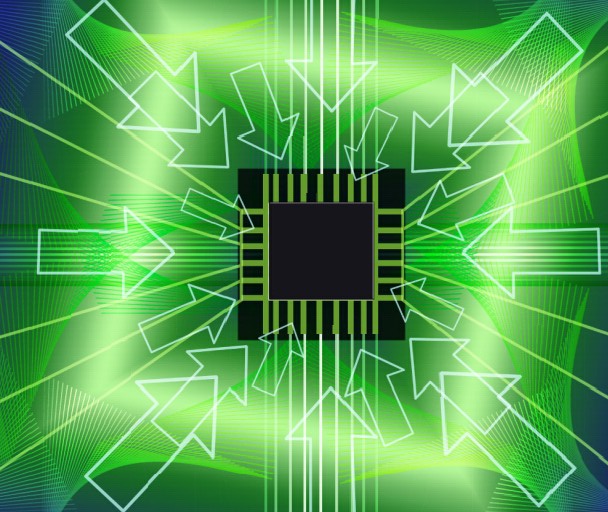Not far from 2015, the electronics industry has changed dramatically. The enthusiasm and celebration of 2015 CES does not seem to bring much luck to Sony. Sony CEO Hirai Kazuo, who was still in high spirits at CES some time ago, now revealed that Sony may withdraw from the mobile phone and TV market; Qualcomm, also missing good luck, Although the status of Qualcomm's mobile chip dominance is untouchable, the long-term anti-monopoly lawsuit has also caused this industry giant to suffer. Recently, Qualcomm is also accepting anti-monopoly investigations in Europe and the United States. It seems that Qualcomm's 2015 days It won't be too good. In addition to Sony and Qualcomm, which one is not a good day? What other interesting news is not to be missed? Please pay attention to today's electronic "core" Wen Zaobao. First, smart home 1. Sony is considering withdrawing from the mobile phone and TV market. The sluggish electronic business brought Sony a long-term loss, and after Hirai Kazuo became the CEO of Sony, his revitalization plan failed to achieve results, and he faced external doubts. According to a Reuters quoted by Sony executives, Mr. Hirai may transfer Sony’s TV and mobile phone business in the future, or set up a joint venture with an outside company. Reuters said that Hirai Kazuo and management are open to these options, but Sony has not yet made specific decisions such as selling assets. 2. Three major changes in the smart home industry in 2015. The advantages and disadvantages of the platform are clear . Whether it is Google, Apple, Samsung and other international giants, or U+, BAT, Jingdong, Xiaomi, all of them are deploying smart homes in 2014 with an open platform; brand preference has gradually formed , including the crowdfunding platform in 2014. The various channels have boosted smart home products, concepts and lifestyles. Users have formed a preliminary understanding of smart homes; products are falsified . In 2015, smart homes will further move from the concept level to the product level and application level. Second, communication news 1. The Qualcomm case may trigger a chain reaction, and the EU and the United States began investigations. According to media reports, people close to the relevant departments of the State Anti-Monopoly Bureau revealed that the investigation of the case has recently ended. Qualcomm and the relevant state departments have also reached an agreement, and relevant state departments are choosing the right time to announce. Analysts say the results of the Qualcomm case may trigger a chain reaction, and the outcome of the case will be of concern to other countries. In November last year, Qualcomm proactively disclosed that in addition to China, the company is also accepting investigations by the European Commission and the US Federal Trade Commission because the company may violate European and US antitrust laws. 2. MediaTek is working on a 10 or 12 core processor. According to domestic industry sources, MediaTek's next product to be released may be a 10 or 12-core processor. If everything goes according to plan, then we may be able to see the finished products of these processors before the end of this year, which will be a new achievement, because this process often takes several years. Obviously, considering that many applications still can't take advantage of the full performance of 8-core or even 4-core, then 10 or 12 cores still don't make much sense for them, but MediaTek has to prove that they have the ability to integrate more cores in the area. In the limited chip, this is also the trend of high integration in the future. Third, intelligent hardware 1, 3D printing ripening smart hardware. Demand is the biggest driver of innovation, and the same law applies to 3D printing. Because of the intelligent hardware and the adoption of 3D technology in more fields, the speed of innovation in 3D printing has been further accelerated. In fact, 3D printing technology is gaining accelerated innovation through integration with other technologies, which is making many possibilities impossible. The Reebok Checklight Smart Headgear, which won the Best Creative Award at CES, was quickly introduced to the market. A lot of credit comes from 3D printing technology. This smart headgear trial uses at least 5 kinds of 3D printing technology because of 3D printing. The low-cost rapid prototyping and easy iteration feature made this headgear finally available after 1500 drop experiments. The technological breakthrough of 3D printing makes the application field of 3D printing continue to break through people's imagination. 3D printing is changing manufacturing and is creating more and more new services and new industry opportunities. 3D printing + cloud computing + design tools make 3D printing a new service industry. 2. Smart wearable devices rush to the pet market. On January 13th, Motorola launched a Scout 5000 smart collar for pets with built-in GPS, pedometer, wide-angle 720P resolution camera, Wi-Fi, 3G data connection, and their activities. Range, beyond the limit, can send push alerts to your phone, equipped with a microphone and speakers, and can also issue commands to pets remotely.
Silicon Controlled Rectifier (SCR) is short for silicon controlled rectifier. SCRs are available in one-way, two-way, turn-off, and light control types. It has the advantages of small size, light weight, high efficiency, long life, easy control, etc. It is widely used in occasions such as controllable rectification, voltage regulation, inverter, and non-contact switches and other automatic control and high-power electric energy conversion.
Silicon Controlled Rectifier (SCR) Silicon Controlled Rectifier,Scr Silicon Controlled Rectifier,3 Phase Silicon Controlled Rectifier,Semiconductor Silicon Controlled Rectifier YANGZHOU POSITIONING TECH CO., LTD. , https://www.yzpst.com